Dell and Procter & Gamble Innovation Leaders Share Web 2.0 Transformation Insight—The Slow Boil
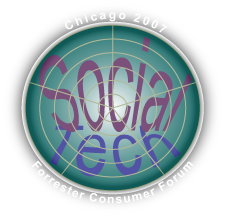 The Global Human Capital Journal’s coverage of the Forrester Consumer Forum 2007 continues with this session on what I’ll hazard to call Innovation 2.0 ,^). David Armano of Critical Mass moderated this an infectious session. It was clear that Proctor & Gamble’s Stan Joosten and Dell’s Manish Mehta had been in the innovation trenches, and their comments were extremely valuable. The Global Human Capital Journal’s coverage of the Forrester Consumer Forum 2007 continues with this session on what I’ll hazard to call Innovation 2.0 ,^). David Armano of Critical Mass moderated this an infectious session. It was clear that Proctor & Gamble’s Stan Joosten and Dell’s Manish Mehta had been in the innovation trenches, and their comments were extremely valuable.
A key ingredient to Web 2.0’s transformational potential is that the technology is an order of magnitude more explicit, easy to use and less costly. It’s possible, and desirable in many cases, to take small steps. On the other hand, Dell took a risky step in launching Direct to Dell in the midst of serious customer service problems, and it leveraged blogs to turn the situation around.
The Global Human Capital Journal published the overall conference wrap as well as in-depth coverage of several sessions. Access all through the link to the conference logo (right). Other articles will be published in the days ahead, and […]
Case Studies Presage Imminent Adoption of Social Technologies—Emerging Markets Prize In Balance
 A who’s who of global marketing executives convened on the Hilton Chicago October 11-12, 2007 for two days of cramming on social networks, emerging technology and transformation. It certainly felt like an inflection point: analysts’ insights and technology pioneers’ zeal were tempered by corporate stories in the trenches. Based on my experience with previous adoption curves, I predict a significant jump in Web 2.0 adoption by corporations next year. A who’s who of global marketing executives convened on the Hilton Chicago October 11-12, 2007 for two days of cramming on social networks, emerging technology and transformation. It certainly felt like an inflection point: analysts’ insights and technology pioneers’ zeal were tempered by corporate stories in the trenches. Based on my experience with previous adoption curves, I predict a significant jump in Web 2.0 adoption by corporations next year.
Depending on your industry, the next six months will be your last chance to be early to market. As success stories become more widespread and executives realize that Web 2.0 has very low barriers to adoption due to the social Zeitgeist and a relatively low price point, the use of social technologies will rapidly become mainstream. The main barrier to adoption is cultural resistance and organizational inertia.
Although this was not a technology conference, in my conclusions, I will provide some insights about why and how Web 2.0 represents a fundamentally new technology value proposition that makes it […]
Consumer Mistrust Will Slow the Reality of Mobile Personalization Vision
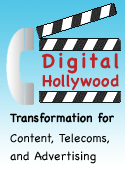 Panelists at Digital Hollywood Chicago constantly spoke about mobile as the most “personal” of the three screens—for several reasons. The phone number is individual, so all the device’s activity can be attributed to a person, whose preferences and needs can be deduced from the activity. In addition, the mobile (phone) accompanies the individual almost everywhere, so it offers a wide scope of visibility into his/her activities, location and interactions. Panelists at Digital Hollywood Chicago constantly spoke about mobile as the most “personal” of the three screens—for several reasons. The phone number is individual, so all the device’s activity can be attributed to a person, whose preferences and needs can be deduced from the activity. In addition, the mobile (phone) accompanies the individual almost everywhere, so it offers a wide scope of visibility into his/her activities, location and interactions.
The mobile device will soon lose the “phone” moniker because the device morphing into a portable digital hub. “Smartphones” have seen much slower adoption than hoped, but functionality, power and capability are steadily increasing while prices fall. Apple’s iPhone was constantly mentioned as the promising breakthrough device.
Mobile devices will change relationships far more than the first screen (TV) or the second screen (computer) because they will touch everyone, their capabilities will rival laptops’ within 2-3 years, and they are inherently social. Social networking via video sharing, Web browsing, email, SMS, IM, music sharing and voice calling is on tap in the latest smartphones. The problem is, their features […]
The Challenge of Consumer/Advertising Misalignment: How to Finance Free Content
 At Digital Hollywood Chicago, few disputed that broadcast TV and mass advertising’s golden age had passed and that several technologies and cultural shifts were pressuring senior marketers to change. To fully appreciate this challenge, one has to consider the three screens through which most consumers experience “content. ” What consumers do with the changing capabilities of each screen changes their expectations and behaviors about their experience with all three screens, dramatically increasing opportunities and threats. Interactivity is increasingly available for TV (video). Convergence among the three screens is another important thread. Younger generations of consumers have little tolerance for the concept of mass advertising. At Digital Hollywood Chicago, few disputed that broadcast TV and mass advertising’s golden age had passed and that several technologies and cultural shifts were pressuring senior marketers to change. To fully appreciate this challenge, one has to consider the three screens through which most consumers experience “content. ” What consumers do with the changing capabilities of each screen changes their expectations and behaviors about their experience with all three screens, dramatically increasing opportunities and threats. Interactivity is increasingly available for TV (video). Convergence among the three screens is another important thread. Younger generations of consumers have little tolerance for the concept of mass advertising.
The most rapacious symptom of the weakness of the mass broadcast advertising model is the widespread adoption of the PVR (personal video recorder), which enables (home) viewers to record TV programs—and to skip advertisements. A couple of eye-opening facts: 1) on average, TV programming contains 8.5 minutes of advertisements during each 30 minute segment of programming and 2) 70% of adverts are fast-forwarded through or eliminated. And these numbers pertain to (mostly) non-digital (analog) […]
Now Everyone Is a Producer—How Will User-Generated Content Affect Traditional Media?
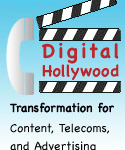 User-generated media (UGM) represents a poignant dichotomy within the context of Digital Hollywood Chicago: panelists and speakers represented a full spectrum of players that provide the capability for people to communicate, work and entertain themselves, but they have in common that they represent business interests. These players are in the business of commercializing communication. Consumers (aka “users,” “people”) represent personal interests: they communicate because they want to; they have little commercial interest in most of their communication. User-generated media (UGM) represents a poignant dichotomy within the context of Digital Hollywood Chicago: panelists and speakers represented a full spectrum of players that provide the capability for people to communicate, work and entertain themselves, but they have in common that they represent business interests. These players are in the business of commercializing communication. Consumers (aka “users,” “people”) represent personal interests: they communicate because they want to; they have little commercial interest in most of their communication.
Panelists grappled with this reality but did not address it directly. They explored business models for UGM—and mostly came up empty. The problem that UGM poses to providers is two-fold: UGM costs providers money in terms of bandwidth and other resources. It also carries a considerable opportunity cost, which is hard to measure but palpable: it crowds out commercial content by occupying customers in two ways: creating UGM and experiencing others’ UGM.
UGM is also difficult to compete against because its producers play by much different rules: they usually produce for free, while commercial producers have high costs. UGM producers […]
Redefining the Industry to Remain Relevant—The Significance of AT&T’s Big Bet on Mobile
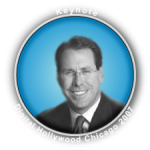 At Digital Hollywood Chicago, AT&T was busy redefining itself as a 21st century communications provider, and we believe that will increasingly mean focusing on content to provide profits. An AT&T veteran but new in 2007 as CEO, Randall Stephenson keynoted the conference by sharing his vision for AT&T and the future of the industry. At Digital Hollywood Chicago, AT&T was busy redefining itself as a 21st century communications provider, and we believe that will increasingly mean focusing on content to provide profits. An AT&T veteran but new in 2007 as CEO, Randall Stephenson keynoted the conference by sharing his vision for AT&T and the future of the industry.
Telecoms provide the network infrastructure of distributed computing and global communications, but infrastructure is a tough business with thin margins and high capital requirements. All telecoms are trying to move up the value chain to escape commoditization pressure and relentless price competition. For example, Sprint is betting heavily on WiMAX to redefine itself as the enabler of digital relationships.
In the context of telecoms redefinition, AT&T’s alliance with Apple could be very strategic for each company, as AT&T can use Apple’s design excellence to increase subscribers and push advanced network services while Apple needs a telecom partner to drive its relevance in the growing third screen market with the iPhone. According to Stephenson, the […]
Rebooting Kraft—CEO Outlines Growth Strategy clearly shows the innovation imperative: A Play in Two Acts, Starring the Consumer.
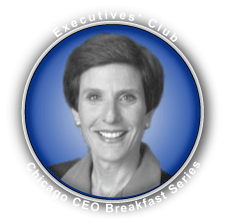 Irene B. Rosenfeld, Chairman & Chief Executive Officer of Kraft Foods, outlined her vision for relaunching Kraft at the Executives’ Club of Chicago’s Chicago CEO Breakfast on May 30, 2007 at the Mid-America Club. She was enthusiastic about the company’s second lease on life: having spun off of Altria this spring, the company is newly independent, and she was eager to share her plan to drive growth by addressing the “eye of the consumer.” Irene B. Rosenfeld, Chairman & Chief Executive Officer of Kraft Foods, outlined her vision for relaunching Kraft at the Executives’ Club of Chicago’s Chicago CEO Breakfast on May 30, 2007 at the Mid-America Club. She was enthusiastic about the company’s second lease on life: having spun off of Altria this spring, the company is newly independent, and she was eager to share her plan to drive growth by addressing the “eye of the consumer.”
Kraft Foods is the second largest food company in the world and the largest in North America. It has seven brands that produce revenue of over $1 billion and fifty that bring in over $100 million each. Central to her strategy is leveraging Kraft’s formidable brand portfolio and other economies of scale. Rosenfeld “came home to Kraft” about a year ago, having had highly visible leadership roles at the company in the past and the top job at Frito-Lay immediately prior.
[…]
The Internet, E-Business and Web 2.0 in Context
 Web 2.0 and social networks readily appear as hype, but I will argue that they are actors in a much larger drama, the emergence of the Knowledge Economy, which is currently in its third phase, Web 2.0 and social networks. By understanding the transformation of relationships among your customers and between your customers and your company, you will be in a much better position to guide your company through this area of tremendous change. Web 2.0 and social networks readily appear as hype, but I will argue that they are actors in a much larger drama, the emergence of the Knowledge Economy, which is currently in its third phase, Web 2.0 and social networks. By understanding the transformation of relationships among your customers and between your customers and your company, you will be in a much better position to guide your company through this area of tremendous change.
The Ascendance of the Knowledge Economy
The Knowledge Economy is a post-industrial economy in which value is primarily created through information, and differentiation is achieved by explicitly focusing on customer experience itself rather than on products or services. The life cycles of products and services will increasingly shorten. Leaders of companies with products and services who do not understand this face rampant commoditization from which there is no escape except through unprecedented innovation. We are in the third phase of the growth of the Knowledge Economy in which it is transforming relationships. Each phase is ongoing, but the emphasis shifts over […]
Helps Busy Executives to Tap Growing Online Professional Network
 March 18, 2007, Chicago, USA—Today, The Global Human Capital Journal released its Review and The Unofficial LinkedIn User”s Guide to aid executives and professionals to mine the hidden value of the rapidly growing website. Founded in 2003, LinkedIn is a leading “social” network site for managing business relationships. It currently has over nine million global members who collaborate for professional purposes. March 18, 2007, Chicago, USA—Today, The Global Human Capital Journal released its Review and The Unofficial LinkedIn User”s Guide to aid executives and professionals to mine the hidden value of the rapidly growing website. Founded in 2003, LinkedIn is a leading “social” network site for managing business relationships. It currently has over nine million global members who collaborate for professional purposes.
LinkedIn represents a transformation opportunity for the Global Human Capital Journal”s executive readership. Business and government leaders can significantly increase their ability to execute strategy by leveraging emerging peer to peer knowledge networks. Notably, an executive”s LinkedIn network is beholden to no employer and can increase mobility.
However, online social networks represent a new social milieu. Most executives interviewed by the GHCJ showed a clear mental gap in understanding the potential of online professional networks. Interviewees included LinkedIn members and nonmembers.
GHCJ Chief Editor Christopher Rollyson, a known networker in high tech and corporate circles, explained the motivation for the project:
“I saw a disconnect between LinkedIn and some of the people who would benefit most by using it—corporate executives and […]
How to Increase Your Payback from Using LinkedIn
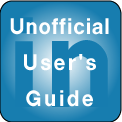 LinkedIn is a “social” site that will prove to be of rare benefit to business executives and professionals in building individualized collaborative networks, as I explained in detail in the GHCJ Review of LinkedIn. However, LinkedIn is seriously lacking in providing a step-by-step guide to help the motivated executive to tap its real value. The functionality of the website is easy to use, but many of the finer points of LinkedIn are lost on the majority of users. This guide attempts to address that. LinkedIn is a “social” site that will prove to be of rare benefit to business executives and professionals in building individualized collaborative networks, as I explained in detail in the GHCJ Review of LinkedIn. However, LinkedIn is seriously lacking in providing a step-by-step guide to help the motivated executive to tap its real value. The functionality of the website is easy to use, but many of the finer points of LinkedIn are lost on the majority of users. This guide attempts to address that.
[…]
|
|
 The Global Human Capital Journal’s coverage of the Forrester Consumer Forum 2007 continues with this session on what I’ll hazard to call Innovation 2.0 ,^). David Armano of Critical Mass moderated this an infectious session. It was clear that Proctor & Gamble’s Stan Joosten and Dell’s Manish Mehta had been in the innovation trenches, and their comments were extremely valuable.
The Global Human Capital Journal’s coverage of the Forrester Consumer Forum 2007 continues with this session on what I’ll hazard to call Innovation 2.0 ,^). David Armano of Critical Mass moderated this an infectious session. It was clear that Proctor & Gamble’s Stan Joosten and Dell’s Manish Mehta had been in the innovation trenches, and their comments were extremely valuable.
 Panelists at Digital Hollywood Chicago constantly spoke about mobile as the most “personal” of the three screens—for several reasons. The phone number is individual, so all the device’s activity can be attributed to a person, whose preferences and needs can be deduced from the activity. In addition, the mobile (phone) accompanies the individual almost everywhere, so it offers a wide scope of visibility into his/her activities, location and interactions.
Panelists at Digital Hollywood Chicago constantly spoke about mobile as the most “personal” of the three screens—for several reasons. The phone number is individual, so all the device’s activity can be attributed to a person, whose preferences and needs can be deduced from the activity. In addition, the mobile (phone) accompanies the individual almost everywhere, so it offers a wide scope of visibility into his/her activities, location and interactions. User-generated media (UGM) represents a poignant dichotomy within the context of Digital Hollywood Chicago: panelists and speakers represented a full spectrum of players that provide the capability for people to communicate, work and entertain themselves, but they have in common that they represent business interests. These players are in the business of commercializing communication. Consumers (aka “users,” “people”) represent personal interests: they communicate because they want to; they have little commercial interest in most of their communication.
User-generated media (UGM) represents a poignant dichotomy within the context of Digital Hollywood Chicago: panelists and speakers represented a full spectrum of players that provide the capability for people to communicate, work and entertain themselves, but they have in common that they represent business interests. These players are in the business of commercializing communication. Consumers (aka “users,” “people”) represent personal interests: they communicate because they want to; they have little commercial interest in most of their communication. At Digital Hollywood Chicago, AT&T was busy redefining itself as a 21st century communications provider, and we believe that will increasingly mean focusing on content to provide profits. An AT&T veteran but new in 2007 as CEO, Randall Stephenson keynoted the conference by sharing his vision for AT&T and the future of the industry.
At Digital Hollywood Chicago, AT&T was busy redefining itself as a 21st century communications provider, and we believe that will increasingly mean focusing on content to provide profits. An AT&T veteran but new in 2007 as CEO, Randall Stephenson keynoted the conference by sharing his vision for AT&T and the future of the industry. Irene B. Rosenfeld, Chairman & Chief Executive Officer of Kraft Foods, outlined her vision for relaunching Kraft at the Executives’ Club of Chicago’s Chicago CEO Breakfast on May 30, 2007 at the Mid-America Club. She was enthusiastic about the company’s second lease on life: having spun off of Altria this spring, the company is newly independent, and she was eager to share her plan to drive growth by addressing the “eye of the consumer.”
Irene B. Rosenfeld, Chairman & Chief Executive Officer of Kraft Foods, outlined her vision for relaunching Kraft at the Executives’ Club of Chicago’s Chicago CEO Breakfast on May 30, 2007 at the Mid-America Club. She was enthusiastic about the company’s second lease on life: having spun off of Altria this spring, the company is newly independent, and she was eager to share her plan to drive growth by addressing the “eye of the consumer.” Web 2.0 and social networks readily appear as hype, but I will argue that they are actors in a much larger drama, the emergence of the Knowledge Economy, which is currently in its third phase, Web 2.0 and social networks. By understanding the transformation of relationships among your customers and between your customers and your company, you will be in a much better position to guide your company through this area of tremendous change.
Web 2.0 and social networks readily appear as hype, but I will argue that they are actors in a much larger drama, the emergence of the Knowledge Economy, which is currently in its third phase, Web 2.0 and social networks. By understanding the transformation of relationships among your customers and between your customers and your company, you will be in a much better position to guide your company through this area of tremendous change. March 18, 2007, Chicago, USA—Today, The Global Human Capital Journal released its Review and The Unofficial LinkedIn User”s Guide to aid executives and professionals to mine the hidden value of the rapidly growing website. Founded in 2003, LinkedIn is a leading “social” network site for managing business relationships. It currently has over nine million global members who collaborate for professional purposes.
March 18, 2007, Chicago, USA—Today, The Global Human Capital Journal released its Review and The Unofficial LinkedIn User”s Guide to aid executives and professionals to mine the hidden value of the rapidly growing website. Founded in 2003, LinkedIn is a leading “social” network site for managing business relationships. It currently has over nine million global members who collaborate for professional purposes. LinkedIn is a “social” site that will prove to be of rare benefit to business executives and professionals in building individualized collaborative networks, as I explained in detail in the GHCJ Review of LinkedIn. However, LinkedIn is seriously lacking in providing a step-by-step guide to help the motivated executive to tap its real value. The functionality of the website is easy to use, but many of the finer points of LinkedIn are lost on the majority of users. This guide attempts to address that.
LinkedIn is a “social” site that will prove to be of rare benefit to business executives and professionals in building individualized collaborative networks, as I explained in detail in the GHCJ Review of LinkedIn. However, LinkedIn is seriously lacking in providing a step-by-step guide to help the motivated executive to tap its real value. The functionality of the website is easy to use, but many of the finer points of LinkedIn are lost on the majority of users. This guide attempts to address that.